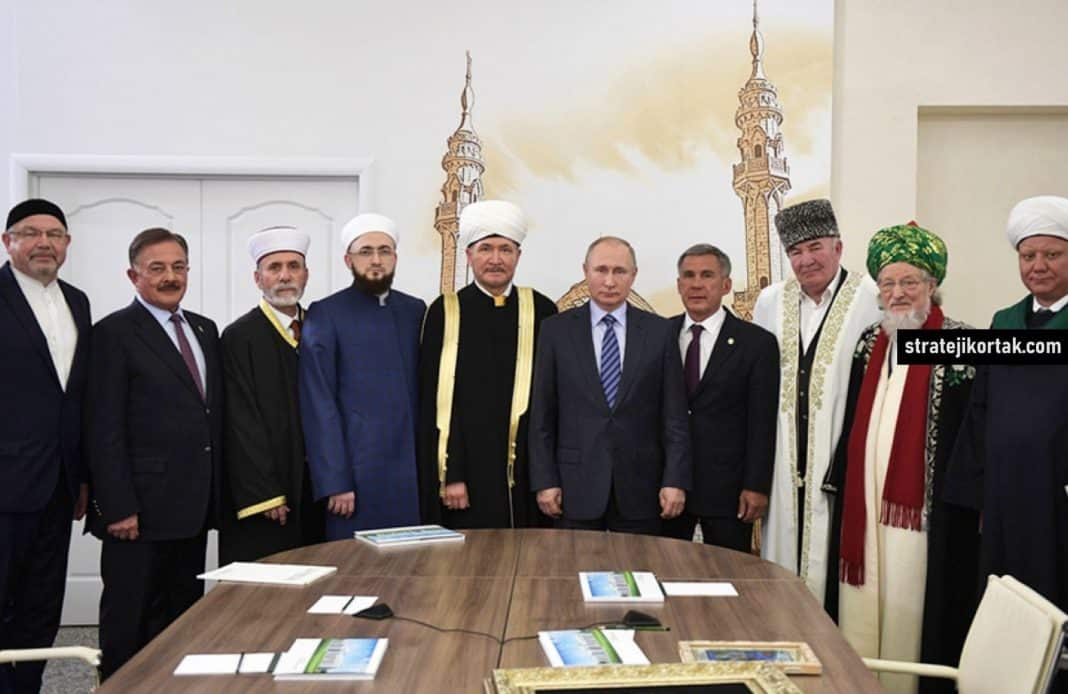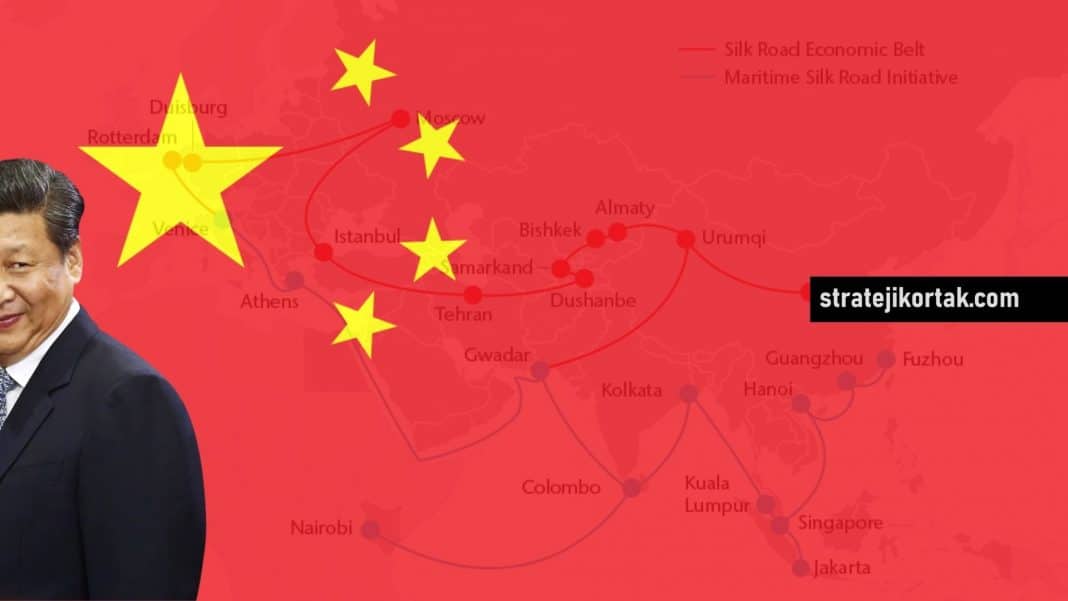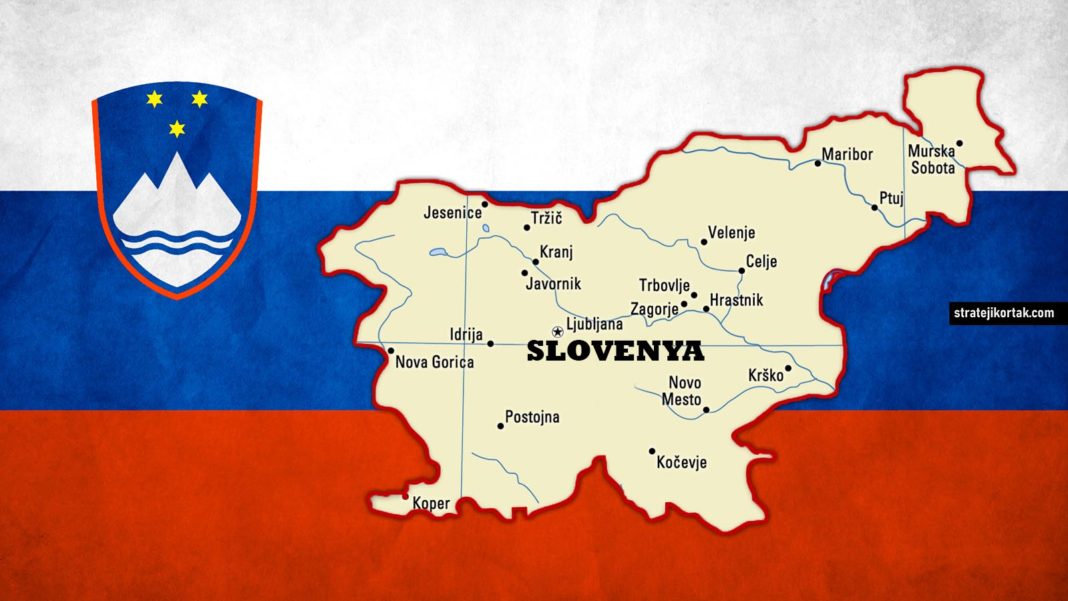Although Russia has been home to many ethnic groups since the past, its religious and cultural diversity is also quite high. However, despite the dissolution of the Soviet Union, Russia’s dominance in Central Asia is still evident. In addition, Muslim groups living in Russia were affected by Russian state policies. The aim of this study is to make a comparative analysis of Muslim groups living in Russia and Russians living in Central Asia. Since there is not much confusion within the scope of the study, Tatars will be examined as a Muslim group. As a result of the study, the sociological contexts and government policies of these groups living in the region will be discussed.
Although the territory of Russia is in a very large area, it has accommodated many different nations, religions and cultures within itself. Although the concepts of conducting a sovereignty policy in these lands spread over a very wide area are different, Russia has followed a very strategic path in implementing these policies. So is Russia a geography prisoner country? Or, has Russia fully sovereignty in the region, making use of its opportunities despite being a prisoner of geography?
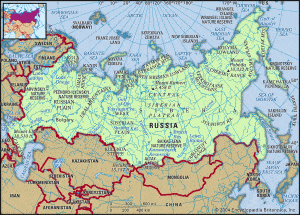
Before mentioning the scope of the study, it is useful to give general information about Russia: As it is known, the Russian lands are quite large and when the past history is considered, they have expanded considerably due to expansionist policies and ruled in a plain-like geography. The leaders of the Russian plain have to manage very well because the time zones and landforms between the two ends of the country are quite different, they have to shape their policies accordingly.
In addition, although the Russians have focused all over the world in the international system, the main focus has been the West since the past, and although the policies change from time to time, the Russians have very different concepts and abilities in the use of force. In geographies, societies are sometimes referred to as the animal symbol. In Russians, the “bear” figure is sacred and the character of the country is proportional to the symbol of this animal. As mentioned by people with diplomatic backgrounds and politicians, if all geography and politics are taken into account, Russia can be divided into three groups for those who formed the past USSR and present-day Russia: the neutral ones, the pro-Western group, and the pro-Russian group (Marshall, 2019). When this was the case, Russia’s policies towards the communities living under it were different.
In addition, if we need to put forward a thesis here, the maps drawn during the dissolution of the USSR had border problems, accidental diaspora groups were formed, and this situation brings to the fore the problems that continue today, since the dissolution of the USSR. When all these arguments are focused, a comparative analysis will be made by mentioning the Muslim communities living in Russia, focusing on Tatar Muslims with deductive logic, and then evaluating the Russians living in Central Asia. Because, although the Islamic discourse and the Russians living in Central Asia have different characteristics, the two communities are stuck in the problematic borders and regions drawn, in short, although the government policies are different, they may experience common problems due to the border.
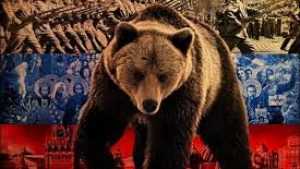
Muslims in Russia
Looking at the past, the interaction of Russians and Muslims goes back a long way. So much so that this process can be referenced up to the Volga region (Shams‐Ud‐Din, 1984). A new age in Russian history was sparked by the Russians’ capture of Kazan. The Kazan Khanate was the most important barrier for the Russians to descend into the Caspian Sea along the Idil (Volga) River and extend to the lower Ural. The capture of Kazan has enabled the spread of Russia to the Turkish countries.
The Russians obtained a Muslim subject for the first time in their history with the conquest of Kazan and achieved the character of an empire (Kurat, 2014). The Volga area with its Muslim population (Bashkortostan, Tatarstan, and some neighboring areas with substantial Muslim minorities) always seemed like a “Islamic island” in the vast “Orthodox Christian Sea.” The Muslim-dominated part of Russia, specifically Bashkortostan, is separated from Central Asia by a narrow, 18-kilometer-wide “isthmus” centered in the Orenburg Oblast. Demographic shifts and the increase in Muslim migration currently happening in the Urals, the Volga Region and Western Siberia are now linking the “Islamic Island” of Russia to the “Islamic continent as a whole.” (Malashenko, 2013).
As can be understood in the light of this information, Russian history and interactions cannot be studied away from Muslims. Before coming to the main point, it would be useful to focus on religion and political policies in the Soviet era. The “Call for Muslim Workers in Russia and the East” declaration signed on December 3, 1917, right after the October Revolution of 1917, was proof that, unlike the Tsarist regime of the New Soviet Government, the Muslims living in this area acknowledged their national and religious identity. It was mentioned in this declaration that values, traditions and all kinds of national institutions and organizations would be freely assessed and all these facts would be guaranteed (Tombak, 2011).
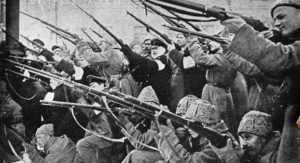
Instead of being a religion that prioritized only religious principles, the Soviet regime analyzed the religion of Islam within a phenomenon that included politics and justice and implemented the policies based on religion in two phases. While the first phase of this strategy was rigidly directed at irreligion, the second phase was determined to eradicate the “national will” and “national consciousness” embodied by the identity of Muslim minorities (Ahat, 2009). That is to say, when looking at these policies, there was no real realization because mosques did not experience institutionalization like churches. Although Islam contains political and religious motivations, this can be described as follows; it is also a phenomenon that permeates the human soul. The following come to the fore sociologically when analyzed in the background of that period: the circumcision of Muslim boys[1], the celebration of the Sugar Feast, religious marriage in addition to the official marriage, and again the majority of society preferred Muslim tombs and performed funeral ceremonies in an Islamic manner (Braker, 1984).
In this context, it is useful to examine the Kazan Tatars in Russia, especially for Muslim groups. The number of Kazan Tatars among the Muslim groups in Russia is quite high, and this situation is also prominent in commercial activities. Since Kazan was an important center of commerce. Kazan town commercially replaced Saray, the center of the old Bulgarian and Golden Horde, after the Middle Idil (Volga) River became stable. Kazan was provided with security; many people came from Lower Idil (Volga), Azov and Crimea (Kurat, Kazan Hanlığı (1437-1556), 1954).
In terms of language and religion, the proximity of the Tatars to Central Asians led to their success in the commercial sector. Because of the loyalty of Muslims to each other, markets were closed to Christian and Jewish traders in different areas. The language and religious affiliation of the Tatars with the people here, however, gave them the ability to trade freely. However, they were also influential in industry and other fields, but in agriculture it should be noted that their land was taken from the Tatars. Hunter maintains that in Tatarstan’s struggle for self-determination, religion did not play a dominant role. Among the Kazan Tatars, the educated elite had acculturated themselves to Soviet cultural supremacy and Islamic rule. Islam, however, was a significant aspect of the Kazan Tatar identity and was commonly used for political purposes.[2]
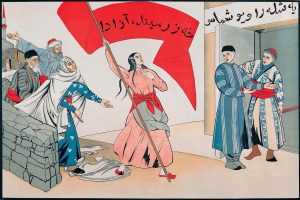
To give information about the Muslim communities in Russia in general; Although not an exact official number, property owners in Russia ranging from 3 million to 30 million (Hunter). If there is a need to give information about the Soviet period, it can be explained as follows; there are some 45 million Muslims in the Union of Soviet Socialist Republics who, after Orthodox Christians, constitute the second largest religious minority in Russia. From the Muslim population’s point of view, the USSR ranks fifth in the world, second only to Pakistan, which has the fourth largest Muslim population (Shams‐Ud‐Din, 1984).
If it is necessary to examine the position of Muslims in today’s Russia; the Muslim population, which declined in Russia during the Communist era due to migration, conflict and other factors, increased after the 1990s following the dissolution of the USSR. At the same time, the number of mosques in the federation rose from 500 to 5,000 after the fall of the USSR (Karadere). As in some other European states, no government-led religious discrimination and anti-Islamic movements such as anti-hijab policies can be found in modern Russia. No longer a shocking sight in the country is Muslim women wearing headscarves. Moreover, in 2002, Muslim women won a court case that required them to be photographed for identity papers with a headscarf.
Putin Period Muslims in Russia are as follows; In 2005, Putin regarded the breakup of the Soviet Union as the greatest tragedy in the 20th century and of the Kremlin through a series of changes, eventually ushering in a new age somewhat reminiscent of all aspects of the Soviet Union.[3] Muslims today can openly use methods of communication to communicate their message to the world. The grassroots form of Islam is also very prevalent in Russia, and in reality it is often the understudied portion of the issue. The state uses the Wahhabi threat to place pressure on Muslims in parallel to this. Islamophobia in Russia It was used as an excuse, especially under Putin, to use a more security-oriented policy approach to Muslims. By fostering Islamophobia within the country, the media strengthens anti-Islamic feelings, a trend that began with the Chechen War. In this regard, the large Muslim presence in Russia, centuries of Tatar rule over the Russians, terrorist attacks by extremist groups in Russian cities, strengthened the Islamophobic approach in Russia. The Russian oppression against Muslims went unnoticed under the shadow of the 9/11 attacks and the ensuing US led war effort on terrorism.
As far as considering, Russian history, Islam has played a major role and it is still part of Russian culture. In Russian-Muslim relations, the millennium period is obscured by the tensions between two cultures. In narratives describing the relations between Russians and Muslims, the Russian government’s atrocities against its Muslim subjects and Muslim neighbors, as well as the wars between the two sides, played a key role. Muslim Russia differed greatly throughout itself. This varies from their interpretation of Russian rule and their cultural, ethnic and geographical trends. Russia’s poorest regions, the eight so-called titular Muslim republics, especially those in the North Caucasus, are most often those heavily populated by Muslims.
Russians in the states of Central Asia
After the collapse of the USSR, many large and small states emerged in the region. However, these are states that still have border problems or other problems today, and diasporas were formed accidentally with sudden border changes. Accidentally diasporas, very different kind of diaspora is exemplified by Germans and Russians than that on which recent debate has centered. For decades, too, Russians have migrated outward, primarily eastward and southward, from the initial core area of Russian settlement in what is now northwestern Russia.
The migration continued, of course, under the Soviet government, and was partly supported by the regime. Thus, by the fall of the Soviet state, some of those who found themselves unexpectedly transformed from privileged citizens of great power into precariously placed minorities in precariously established states had migrated themselves from Russia to one of the non-Russian republics (Brubaker, 2000). The Russian Federation was faced with a drastically altered geo-political situation after the break-up of the Soviet Union. The Russian periphery is now surrounded by states that once were part of the Soviet Union. All of a sudden, in all the successor states barring Russia, a dominant party found itself as a minority. Russia launched its expansion into Central Asia in the sixteenth century. As soon as it had overthrown Tatar rule, the Muscovite Grand Duchy started its march on Central Asia (Das, 2008).
Central Asia also counted 9.5 million Russians in the 1989 census, amid the upheavals of the 1970s and 1980s. The unexpected disappearance of the Soviet Union, however, has triggered several issues and concerns that have significantly increased migration flows. There were far greater protests originating in Central Asia than those from other republics. More than half of the migrants to Russia were from the five states, compared to just 17 percent from the Caucasus, 20 percent from Ukraine and 3 percent from the Baltic States. In 2000, migration from Kazakhstan alone accounted for more than 28% of the former Soviet territory’s internal migration. The Central Asian Republic that has been most seriously impacted by the emigration of its Russian citizens is Tajikistan. Almost 85 percent of Russians have left the country. Migration flows in the direction of Tajikistan had declined by the 1970s, and they ceased to be positive in 1975 (Peyrouse, 2008). Kyrgyzstan’s condition with regard to ethnic Russians is much more negative. The number of ethnic Russians dropped from 419,600 to 364,600 between 2009 and 2015, primarily due to domestic turmoil, rather than economic opportunities in Russia, as is the case with the ethnic Russians of Kazakhstan. Consequently, as long as Kyrgyzstan remains unstable, this trend is likely to continue. Nevertheless, Shustov says, in Kyrgyzstan, there are still enough ethnic Russians to form the base of the “soft power” of Moscow (Goble, 2016).
There are various economic and social reasons for the immigration of the Russians living in Central Asia from the region. The political circumstances that developed on the eve of dissolution created a perception of danger on different accounts as well as on account of state policies that emerged after the independence of 15 new states (besides Russian Federation was formed). The majority of Kazakhstani emigrants have gone to Russia. The deteriorating economic condition and the lack of optimism for growth are the main factors. Similarly, economic considerations in Kyrgyzstan were the main reasons for the Slavs to emigrate. The 1990s surveys on Russian migration found the lack of jobs for younger generations, language policies and low living standards as the key reasons for emigration. Economic factors were of primary importance in driving Central Asia’s ethnic Russians to emigrate, according to Scott Radnitz, and political factors were rarely sufficient to produce emigration (Aijaz A. Bandey, 2012).
Sümeyra Tahta
Stratejik Ortak Misafir Yazarı
[irp posts=”30672″ name=”1998 – 1999 Kosova Savaşı Ekseninde Rusya’nın Balkanlar Politikası”]
Footnotes
[1] This translation is an excerpt from a book, although i cite it as Apa, i want to mention the translator of the reference to look; Braker Hans, İslamiyet Sorununun Sovyetlerin İç ve Dış Politikasındaki Yeri, Çev: Prof. Dr. Yuluğ Tekin Kurat, Orta Doğu Teknik Üniversitesi Asya – Afrika Araştırmaları Grubu Yayın No:7, 1984 Ankara.
[2] Koçak, Muhammet, Offıcıal Islam in Russıa: An Analysıs of Past and Present, Master Thesis, Department of IR, İhsan Doğramacı Bilkent University, 2015.
Ahat, A. (2009). Osmanlı’dan Günümüze Türkiye ve Orta Asya. İstanbul: Doğan Kitap.
Aijaz A. Bandey, F. A. (2012). Socio-economic and political motivations of Russian out-migration from Central-Asia. Journal of Eurasian Studies.
Braker, H. (1984). İslamiyet Sorununun Sovyetlerin İç ve Dış Politikasındaki Yeri. Ankara: Afrika Araştırmaları Grubu .
Brubaker, R. (2000). Accidental Diasporas and External ”Homelands” in Central Eastern Europe: Past and Present. Reihe Politikwissenschaft Political Science Series, 1-17.
Das, B. K. (2008). Russian Minorities in Central Asia and Russia-Central Asia Relationship. Jadavpur Journal of Internatıonal Relations , 64-88.
Goble, P. (2016). Ethnic Russians Leaving Central Asia and With Them, Putin’s Hopes for Influence. Eurasia Daily Monitor Volume: 13 Issue: 22.
Hunter, S. (tarih yok). Islam in Russia.
Karadere, M. L. (tarih yok). Rusya ve Bölge Müslümanları: Tarihten Günümüze İlişkiler. İNSAMER, 1-8.
Kurat, N. A. (1954). Kazan Hanlığı (1437-1556). DTCF Dergisi, 227-248.
Kurat, N. A. (2014). Rusya Tarihi (Başlangıçtan 1917’ye Kadar). Ankara: Türk Tarih Kurumu Yayınları.
Malashenko, A. (2013). The Dynamics of Russian Islam. CARNEGIE ENDOWMENT FOR INTERNATIONAL PEACE.
Marshall, T. (2019). Coğrafya Mahkumları: Dünyanın Kaderini Değiştiren On Harita. İstanbul : Epilson .
Peyrouse, S. (2008). The Russian Minority in Central Asia: Migration, Politics, and Language. Kennan Institute.
Shams‐Ud‐Din. (1984). Russian policy toward Islam and Muslims: an overview . Institute of Muslim Minority Affairs. Journal, 1-17.
Tombak, F. (2011). 20. Yüzyıl Sovyet Rusyası’nda Din, İslamiyet ve Nüfus Üzerine Bir Değerlendirme . History Sutudies International Journal of History, 360-370.
[/vc_toggle]

